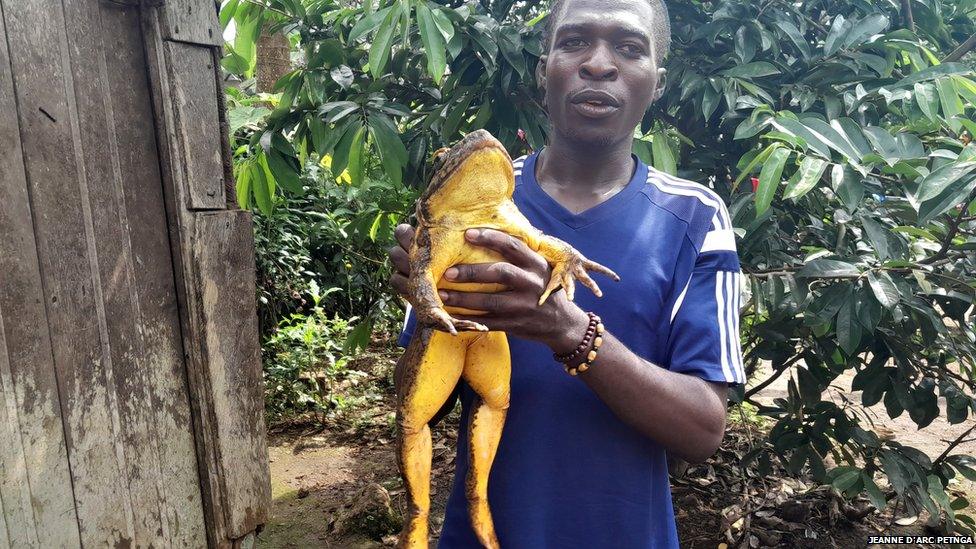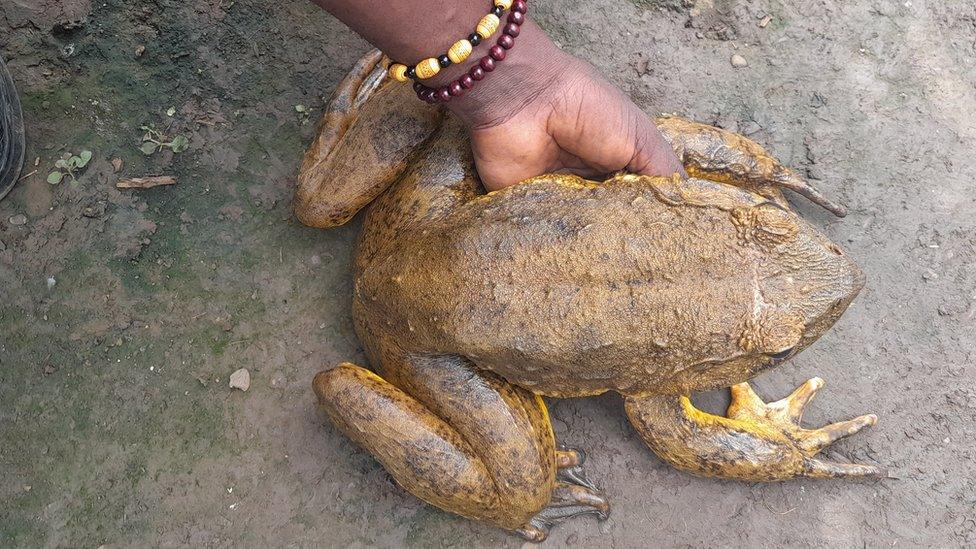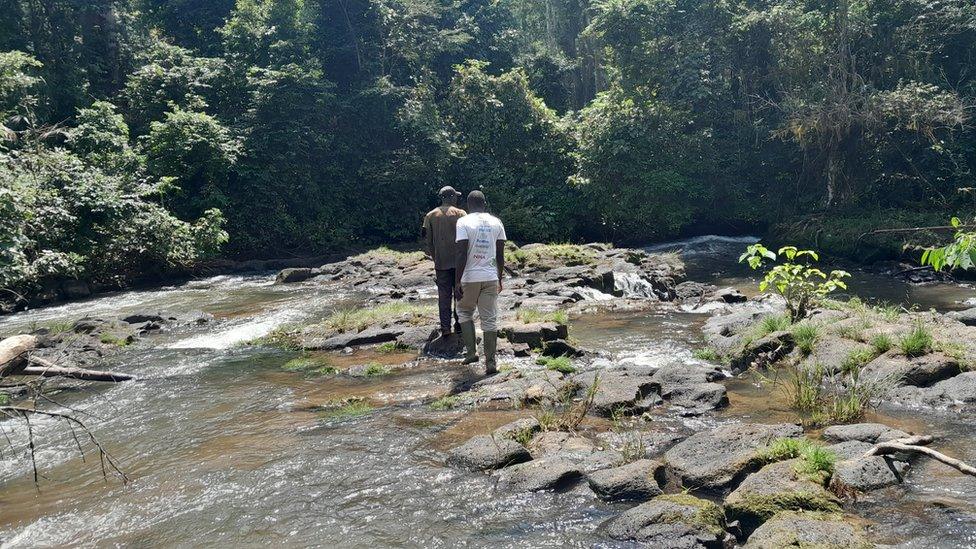The mission to save the biggest frog on earth
- Published

Cedric Fogwan holds aloft one of the record-breaking goliath frogs
When Cedrick Fogwan had his first encounter with the goliath frog he was impressed by its mighty proportions.
Growing to the size of a cat, it's the world's largest living frog.
Almost like holding a (human) baby, he says, having handled one in a rescue mission.
The Cameroonian conservationist was so captivated he set up a project to fight for the future of the endangered species.
"When I found this species was unique - the biggest one in the world - I said this is something that we cannot easily find elsewhere and I was proud of it," he says.
"People in the area say they are blessed to have something like that; they attach to it a cultural value."

Goliath frogs can be as big as a domestic cat, measuring up to 32cm (13in) in length and weighing more than 3.25 kg (7.2lb)
For decades, the goliath frog has been over-hunted for food and the pet trade in Cameroon and Equatorial Guinea.
Its habitat beside rivers and streams is fast being destroyed and the frog is now classified as endangered on the official extinction Red List.
The frog is little-known to science and even in Cameroon many local people are unaware of its value to the ecosystem, such as preying on the insects that damage crops.

The frog lives beside streams where it moves boulders to nest
The conservation team works to persuade hunters to become citizen scientists, recording sightings of the frog rather than using it for food.
They are also working with local groups to help set up snail farming to provide an alternative food source.
The conservation work is starting to pay off, with the goliath frog returning to new rivers in the Mount Nlonako Reserve.
A call from a former poacher to report a frog had been captured by a neighbour was a turning point. Cedric was able to rescue the frog and return it to the wild.
"I believe we can have it forever and we can continue to be proud of it," he says.
The project to save the goliath frog is supported by the Conservation Leadership Programme (CLP) run by Fauna & Flora International, BirdLife International and the Wildlife Conservation Society.
Follow Helen on Twitter @hbriggs.